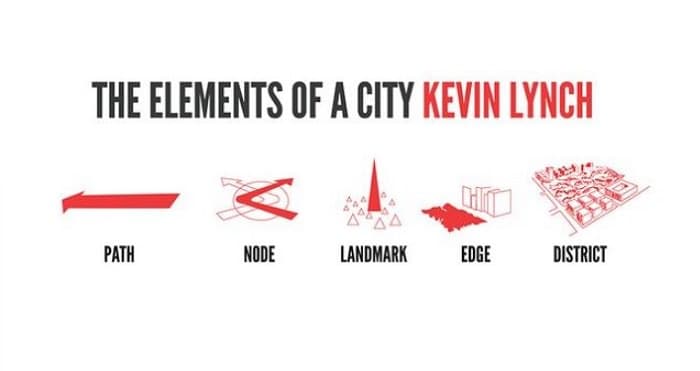Kevin A Lynch was one of the pioneers in urban planning before the profession was well-known or came into existence. Architecture was a prominent profession in America during his times and he trained under a few architects before he taught and trained as an urban planner. He studied under Frank Lloyd Wright and completed his City Planning degree from MIT which was and is still one of the most popular and competitive institutions in America. He was known for his work on the different types of sensory inputs that people receive from their environment. His most famous work is called The Image of the City highlighting how people use the city on a daily basis. This was a pioneering work in the field after which psychological perspectives of urban planning came into existence with the works of Jane Jacobs, Jan Gehl and similar philosophers who have closely followed the concepts of Kevin Lynch.
Kevin Lynch’s notable works
His work on City Sense and City Design was the first of its kind to highlight the importance of design principles in urban planning. Sensory inputs that people gather in their cities is closely related to the overall urban design principles of the ways in which the city is structured and functions regularly. Not only is the design of public spaces important, but also the design of our streets, roads, and overall infrastructure of the built environment are important in understanding how we perceive and understand our cities at a psychological level. This concept is also important for map making and GIS-based design. This book highlights humanistic philosophies and principles that are still not followed in many cities around the world. This has given birth to concepts of placemaking and place design theories that want to make our cities available at a human scale. Many cities in America that Lynch has researched and explored in his work, have been at to a certain extent been successful in putting people first in their humanistic based design of city planning. However, many cities around the world, including America have become car-dependent and this is one of the major threats to humanistic and perceptive design principles of city planning.

In the Image of the City, Lynch continues this work on perceptive design principles but takes his work further by describing exactly how people perceive their surroundings. The book is the result of a five-year study of particular cities in USA, namely, Boston, Jersey City and Los Angeles. It focuses on how people who navigate their cities take in information of the city, and use it to create mental maps in their brain. Lynch’s conclusion was that people formed mental maps of their surroundings consisting of five basic elements. He suggests that there are five main elements to the humanistic design, these are: Paths, Edges, Districts, Nodes, and Landmarks. Paths and Edges relate to the general structures we pass by daily such as the streets we walk in, sidewalks and other important features that make walking a pleasurable activity in the city. He also explains the design function of each of the five elements to indicate how our cities can be designed to serve the best use for all human beings. He has even conducted research on children and compared them with adults to see how people differ in conceptualizing their cities with age.
Unfortunately, in India, sidewalks and other features that help create a walkable city needs to be drastically improved to achieve the same quality and function that people in America and first world nations make use of on a daily basis. This is because the five nodes that Lynch suggests are mainly controlled by government organizations who are at the forefront of city building. Cleanliness of the streets is also a function Lynch highlighted that can impact our perception and use of the streets on a regular basis. These features give the city a character and identity that provides for pleasurable activities in a person’s life. Lynch highlights that imageability and wayfinding within the cities are influenced not only through maps, but also our everyday perceptions of our streets and geographical boundaries. In other words, humans create mental maps of their cities based on the concepts of Paths, Edges, Districts, Nodes, and Landmarks. For a more detailed understanding of these concepts, please refer to the book.
Related Article: Jane Jacob’s vision for cities
Conclusion
Lynch’s works influenced humanistic design planning and environmental psychology. However, he was a planner who played an important role in American city design. Very few people had thought about the psychological importance of our senses in understanding city design before Lynch, and this contributed to the success and recognition of his work. 21st-century concepts of placemaking and place design are highly based on Lynch’s work and even participatory and co-design principles in Urban Planning have the basis in Lynch’s work. GIS and creative map-making were also tools that were developed after Lynch’s concepts of mental maps, design and how people perceive their environment. It is important to understand the ways in which people perceive their environments to gain a deeper understanding of constructing cities that impact humans navigate their cities on a daily basis.
Related Articles
Nice content about city planning.